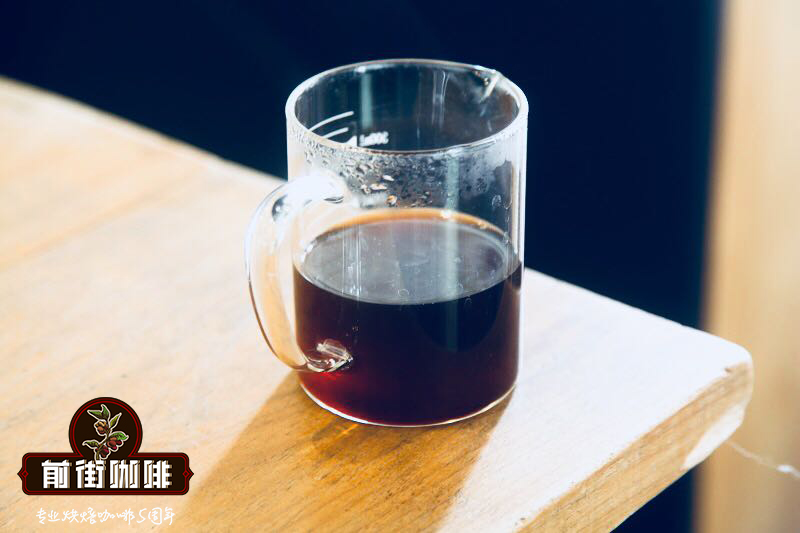Ecuadorian coffee Ecuador Galapago coffee introduction

Professional coffee knowledge exchange more coffee bean information please follow the coffee workshop (Wechat official account cafe_style)
Galapagos means "tortoise" in Spanish, and the island has the famous Galapagos tortoise. Located in the Galapagos Islands, Ecuador, which is recognized by the United Nations Educational, Scientific and Cultural Organization (UNESCO), the use of any chemical fertilizers is prohibited, and raw beans are artificially picked in volcanic soil that is very suitable for coffee growth. and in the shade of tall trees, only the coffee cherries with the best maturity are selected and put into the ecological protection peeling machine to remove the peel except the peel. And the removed exocarp was reused as a natural fertilizer to give birth to a very precious organic boutique coffee.
Coffee treasures from the hometown of giant turtles, which are of excellent quality and do not use any chemicals when growing.
Coffee is grown in Saint Crst ó bal. St. Cristobal is a larger island in the Galapagos Islands (Galapagos Islands) and the only one in the archipelago with plenty of fresh water. At an altitude of 410m, there is a small lake called El.Junco, which forms streams along the rocks and volcanic rocks on the southern slope of the island, and mineral-rich fresh water moistens the land of St. Cristobal, keeping the soil moist and fertile.
In 1875, the indigenous uel J.Cobos of Ecuador planted about 100 hectares of Arabian bourbon coffee trees at the Hasunda Coffee Park (Hacienda El Cafetal) in San Cristobal. The elevation of the plantation is between 140m and 275m, and the climate in this area is equivalent to that of 910m to 1830 m inland. This gradient is very suitable for the growth of high acidity extra hard coffee beans (SHB), which is also the key to the high quality of coffee.
As the world coffee industry is moving towards a targeted mass production model, the coffee industry of St. Cristobal, which is small in scale and of uncertain quality, is in trouble and may eventually be forced to give up without profit.
In the early 1990s, however, the Gonzalez family bought Hasunda Coffee Park. The localized microclimate caused by the Humboldt current (Humboldt Current), strong equatorial sunlight and sharp temperature changes (43 ℃ at sea level and 10: 16 ℃ at 275m above sea level) provided unique advantages that prompted the Gonzalez family to expand their coffee plantation.
Since then, the area of the coffee plantation has doubled through the reclamation of early land. Because of the unique role of the Galapagos Islands in the course of history, the Ecuadorian government has designated the Galapagos Islands as a national park and no longer allows the land to be reclaimed as new agricultural land. and the introduction and use of chemical fertilizers, pesticides, herbicides and other chemicals are strictly prohibited, so coffee in the Galapagos Islands is recognized as a natural product.
Coffee, which is mainly produced on the big island of San Cristobal, is an old bourbon species transplanted from Ethiopia. The dry aroma of coffee has a hint of wheat straw grain, flowers and star anise, and the entrance has soft and bright fruit fermented sour aromas. the light and thick Body is different from the thick and mellow aromas of Jamaica Blue Mountain or Hawaiian Kona, with a hint of sweetness such as apple and sugar cane. It is a cup of high quality coffee worth tasting.
Important Notice :
前街咖啡 FrontStreet Coffee has moved to new addredd:
FrontStreet Coffee Address: 315,Donghua East Road,GuangZhou
Tel:020 38364473
- Prev

What kind of coffee grinder? How do I buy it? How can I make coffee without a coffee maker?
Making coffee itself can be affected by many factors, such as coffee powder, proportion and water temperature. The quality of the bean grinder is important for a cup of coffee. For example, the powder ground by a poor quality bean grinder is uneven in thickness, with large and small particles, and when a stream of hot water is washed down, within three minutes, the large particles have not yet been extracted, and the small particles have been extracted.
- Next

What is 90+ beans its flavor taste
Just as Dove can only be called chocolate-flavored candy, instant coffee can only be called coffee-flavored soft drink. 90+ coffee beans are the symbol of the best honor in the coffee world. 90+ doesn't mean all coffees rated above 90, it means a top coffee line of 13 flavors. Sometimes they appear on different estates, and they have a variety of taste characteristics.
Related
- Beginners will see the "Coffee pull flower" guide!
- What is the difference between ice blog purified milk and ordinary milk coffee?
- Why is the Philippines the largest producer of crops in Liberia?
- For coffee extraction, should the fine powder be retained?
- How does extracted espresso fill pressed powder? How much strength does it take to press the powder?
- How to make jasmine cold extract coffee? Is the jasmine + latte good?
- Will this little toy really make the coffee taste better? How does Lily Drip affect coffee extraction?
- Will the action of slapping the filter cup also affect coffee extraction?
- What's the difference between powder-to-water ratio and powder-to-liquid ratio?
- What is the Ethiopian local species? What does it have to do with Heirloom native species?

